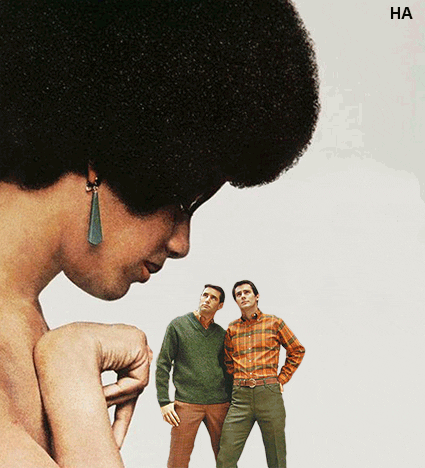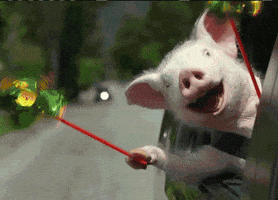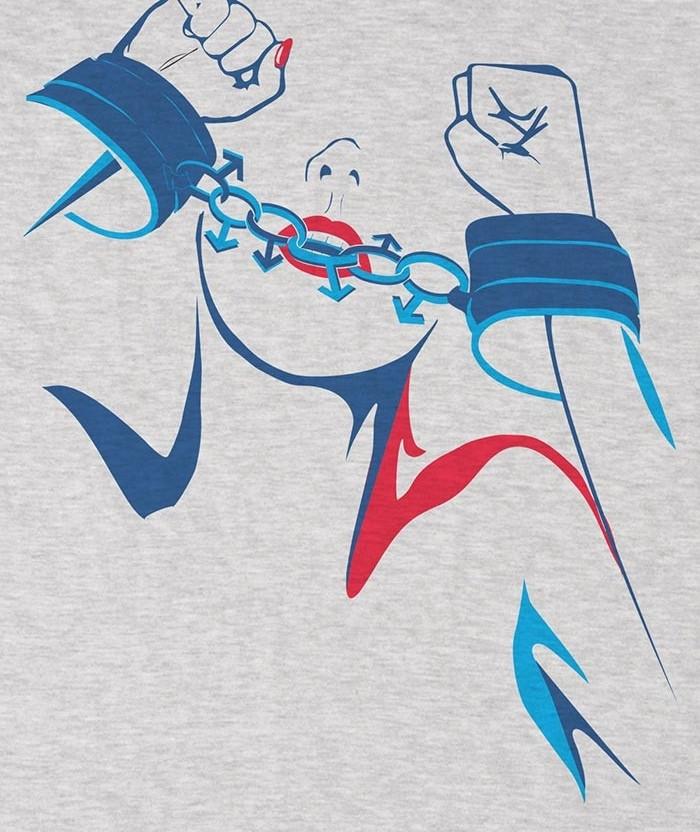 In the middle of a pandemic and amidst the height of the Black Lives Matter movement, social media platforms are hotspots for activism and advocacy. As I scroll through my Instagram feed, I see my peers attending protests and marches as well as re-posting graphics about racist and anti-racist behaviors, petitions for social justice, and calls for mask-wearing in public as many states open up. Along with individuals, organizations and companies are also stepping up on social media platforms to call out past injustices and make commitments to more diverse futures. To learn more about this current movement, I sat down with Kylee Roberts, a communications associate at The Lower Eastside Girls Club who is in charge of LEGC’s social media platforms:
In the middle of a pandemic and amidst the height of the Black Lives Matter movement, social media platforms are hotspots for activism and advocacy. As I scroll through my Instagram feed, I see my peers attending protests and marches as well as re-posting graphics about racist and anti-racist behaviors, petitions for social justice, and calls for mask-wearing in public as many states open up. Along with individuals, organizations and companies are also stepping up on social media platforms to call out past injustices and make commitments to more diverse futures. To learn more about this current movement, I sat down with Kylee Roberts, a communications associate at The Lower Eastside Girls Club who is in charge of LEGC’s social media platforms:
What is your role at Girl’s Club and what drew you to the mission?
I’m the Communications and Development Associate and I’ve been working at Girls Club for about a year now. I had been following Girls Club for about two years before I started working there. So I think the first thing that struck me was that this was a community center for girls and for empowering the next generation of leaders at a center that was very close to where I grew up…By the time I heard about it I had almost graduated from college. Also just seeing all of the opportunities and the people they were able to connect to…they met Michelle Obama a little before I got there.
The girls are able to be exposed to so many amazing opportunities and people. It’s something I wish I had when I was younger and something I am so happy that it exists for girls now. Now that the world is so much more overtly messed up, I think this is the perfect place for a lot of girls in New York City.
Can you tell me a little bit about your educational background?
I always wanted to be a journalist…so I was a Journalism major when I got to Ithaca College. There were a couple of schools around the country, including ours, that were trying to vote out their white leadership, specifically because they were not representing their students of color well. They were not giving them the resources that students of color need, especially at predominantly white schools. Expensive private schools, at that.
Although people say that New York is a melting pot, I went to schools in the city in predominantly white neighborhoods when I was younger and I think that shapes my home friends, too. So when I got to college I was not truly informed of my identity. It wasn’t something that I claimed, being a black woman. It wasn’t something anyone had taught me to be proud of, honestly.
Getting into the politics was a huge thing. From being a journalism major I realized that, especially in the projects we were allowed to do, you couldn’t be a biased reporter. And I started to want to do reports on all of the protests that were going on on our campus. I would get a little more criticism from my professors because I was obviously leaning towards a specific side. So I decided that I wanted to be a part of the movement and help in certain ways. I changed my major to Communications Management and Design.
What role does social media play in activism and why is that important to the work of Girls Club?
Social media is good for Girls Club because a lot of people find us on social media. So the connections that we have through corporate sponsors, through influencers, they drive attention to us and that really helps to get more attention. It’s really just about getting as many people as possible to point to you for Where should I donate if I want to support young girls? Where should I donate if I want to help girls of color in underprivileged neighborhoods? Social media helps to open up your local network. Girls Club is a pretty hyper-local organization. Even though we do reach girls all over the city, we are only in one place. Yet we reach over 20,000 people online, which is crazy to think about.
With that, social media helps get messages across. It also exposes people to a lot of different ideas, as well. Movements are multifaceted and they include a lot of voices. It’s many people coming from many different places. Social media helps get all of those messages across and gives people a voice, in a way. I think people get overwhelmed by the amount of voices that there are. Like, Ugh everyone has an opinion now. But everyone always had an opinion. We’re just giving you the opportunity to say it now.
How has your job changed since the start of the COVID-19 pandemic?
We have put on one event or fundraising campaign every month since the pandemic. So in March we had the Community Action Fund. That requires putting together messaging, getting photos, getting graphics, creating a whole new website. And then after that in April feeding into May, we started the Join the Girls Club Virtual Series of events which was when we tried to contact influencers again to try to spread our message and get people to donate [through giveaways]. And then I planned our Sips for Summer cocktail event. Instead of an in-person cocktail event, which is usually Cocktails for Camp, that turned into an online Zoom party. Then two weeks ago we had the Gala. That’s four different campaigns in the span of three and a half months!
Because everyone is pressed for cash right now, and everyone is trying to raise money because everyone is affected by this, I was doing more and more work. It wasn’t just posting on social media and doing PR, now we need to raise a certain amount of money. Now we need to do five events instead of two. That’s the financial aspect of the change.
http://www.instagram.com/p/CBwZDJhDP0I/
Since the beginning of quarantine, do you find that Girls Club leadership or staff relies on you more because of your experience with digital platforms?
For sure. I was definitely more hands-on in a couple of ways that I wasn’t before.
The Girls Club social media platforms promote social change movements. How do you view this digital activism for other organizations and companies?
This is something I’ve thought about in the past when it comes to Pride. So you’re talking about companies like Gap who put a rainbow sticker on their window for a month and then they sell you overpriced non-eco-friendly shirts that are rainbow patterned saying that they support gay lives. But meanwhile they’re also supporting politicians who don’t support gay lives. It’s the same thing that has happened with Black Lives Matter. Especially pertaining to the current “wave” that’s happening, there definitely is a right way to do things and a wrong way to do things.
I think Target donated $10 million or something like that. Later I saw a statistic that said that is the amount of money that people of color spend at Target in a day…and they only donated that much to organizations. Especially when it comes to rich people and these organizations, they’re putting out these large sums, but it’s only a droplet in the whole lake of money that they actually have. I don’t think that they understand how much impact they really could have if they really did the work. It’s not just throwing money at the problem or taking down a black-faced episode. It’s about calling out the police and making sure that they arrest the cops who killed Breonna Taylor. It’s about making sure that organizations like ours are getting the proper funding so that way this doesn’t happen in the future.
http://www.instagram.com/p/CA_R-jSjS2l/
What about for individuals? Do you share social movements on your personal social media accounts?
I definitely do. I think it’s important. Especially a movement like Black Lives Matter pertains to me and what I really like about this…I don’t like calling it a “wave” because I think this time all of these protests are really going to do something because we’re coming at an intersection with an election. This time around, there was a huge calling for white people to say something. This time white people have been held more accountable to actively be anti-racist and actually do the work. That’s what’s gotten me more excited on social media now because I’m seeing more resources and I don’t have to do the work to create a document. Another white person, as they should, has done the proper work so that way I don’t have to sit here and think about all the ways that I am not equal to that person.
How long do you think this movement will stick around on social media?
It’s disappointing for me to even think that Oh wow! People still care! Early on during the protests my partner told me “I think stuff is really gonna change.” People always say that. Things are happening; a lot of that has to do with COVID. I was actually listening to a podcast the other day that was talking about the fact that people are home; they’re basically trapped at home. We basically have to make everyone sit in a corner and be alone in order to see that there is injustice happening in front of their faces.
I think there has to be a push through the summer because there is an important election coming up. Whether or not Kanye will be on the ballot, I don’t think it’ll make much of a difference. I’m hoping that people aren’t naive enough to think that if Biden wins that that means we’ve solved the issues. Trump is an issue but he’s not the issue. America’s not racist because Trump is president; Trump is president because America is racist. The voting, the action…everything needs to go through, past the inauguration next year. I don’t think people want to think about a world where we constantly have to fight, but that’s what happens when you put things off for so long. That’s also what’s happening with COVID…Not that racism is to people as people are to a pandemic, but there are some definite parallels there.
During this time of social isolation, what aspects of social media do you think are uniting versus dividing?
Uniting: I think people are finding their people online…I know that there have been a lot of great artistic collaborations online that have come from people finding specific communities on social media, which is amazing. I think great things come out of those partnerships.
What might become dividing is when people feel left out, when people feel lesser than when they don’t understand. I’m specifically thinking about white friends who have not been able to grasp what is happening and their inability to try to do the research and to try and listen to the struggles of BIPOC people. I think that’s a self-inflicted divide. It’s really up to the person to decide if they’re going to take the time to do the work. That’s really it: are you going to listen to me talk about how Black people have it worse in this country? Or are you going to crawl back into your bed and pretend like nothing is happening?
There’s also the divide on the people-of-color side, where I can’t spend my energy on knowing that you don’t actively support me when I’m out here fighting.
What is your favorite part about working at Girls Club?
I enjoy the people that I’ve met through Girls Club. My favorite favorite part is working with the Angel Alliance, which is the junior board of volunteers. They put on events throughout the year and they are also predominantly women from really cool fields. I’ve met a lot of them who I feel very connected to. I think it’s just really nice to have a community of women who care about an organization just as much as, if not more than, you do when you work there.
—
Thank you so much Kylee for sharing your insight on the role of social media during this time of progress and change. Check out Kylee’s Instagram @kylee.roberts and her podcast called Black Friend Collective. To see Kylee’s work and the digital activism efforts of the Girls Club, check-out @girlsclubny on Instagram.

 Now I plan to continue researching when documentation of these ideals began and how I can be more active in breaking these ideals down within myself and those around me. Starting with embracing all of the parts of me I have been trained to believe are not ideal.
Now I plan to continue researching when documentation of these ideals began and how I can be more active in breaking these ideals down within myself and those around me. Starting with embracing all of the parts of me I have been trained to believe are not ideal. Most of the time I feel the need to be political in my actions, including the artists I listen to, places I eat and conversations I have with my family. I believe that how I act in real time and who I support financially is important and political. With this constant awareness of my actions and conversations, I notice the need to also detach.
Most of the time I feel the need to be political in my actions, including the artists I listen to, places I eat and conversations I have with my family. I believe that how I act in real time and who I support financially is important and political. With this constant awareness of my actions and conversations, I notice the need to also detach.
 enforcement perpetuates racism and commits murder and also wanting perpetrators to have to change their life instead of victims. So as I continue to learn about new cases and research alternatives to law enforcement for specific situations, I am juggling these ideas and scenarios in my head. I am once again experiencing a
enforcement perpetuates racism and commits murder and also wanting perpetrators to have to change their life instead of victims. So as I continue to learn about new cases and research alternatives to law enforcement for specific situations, I am juggling these ideas and scenarios in my head. I am once again experiencing a 



